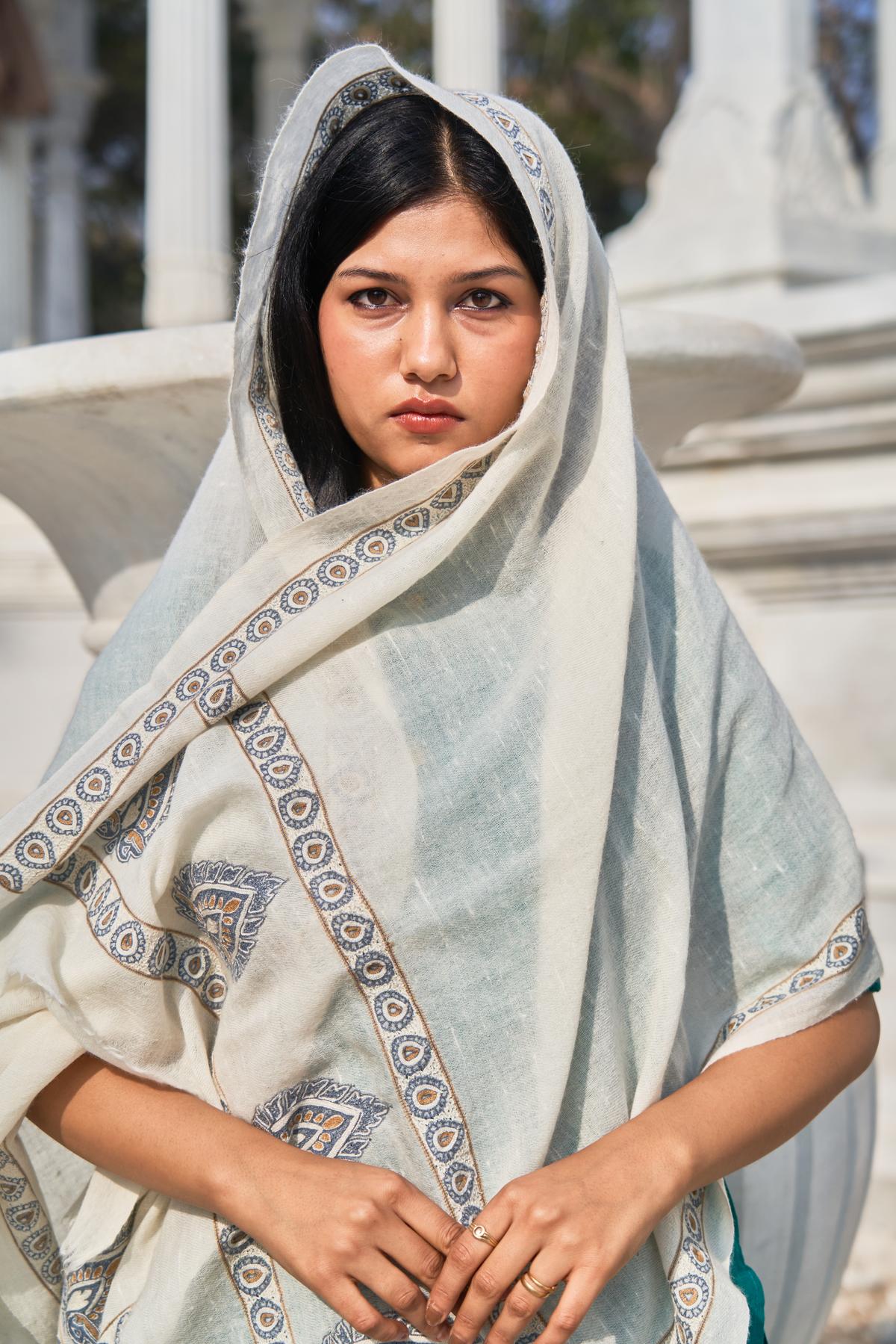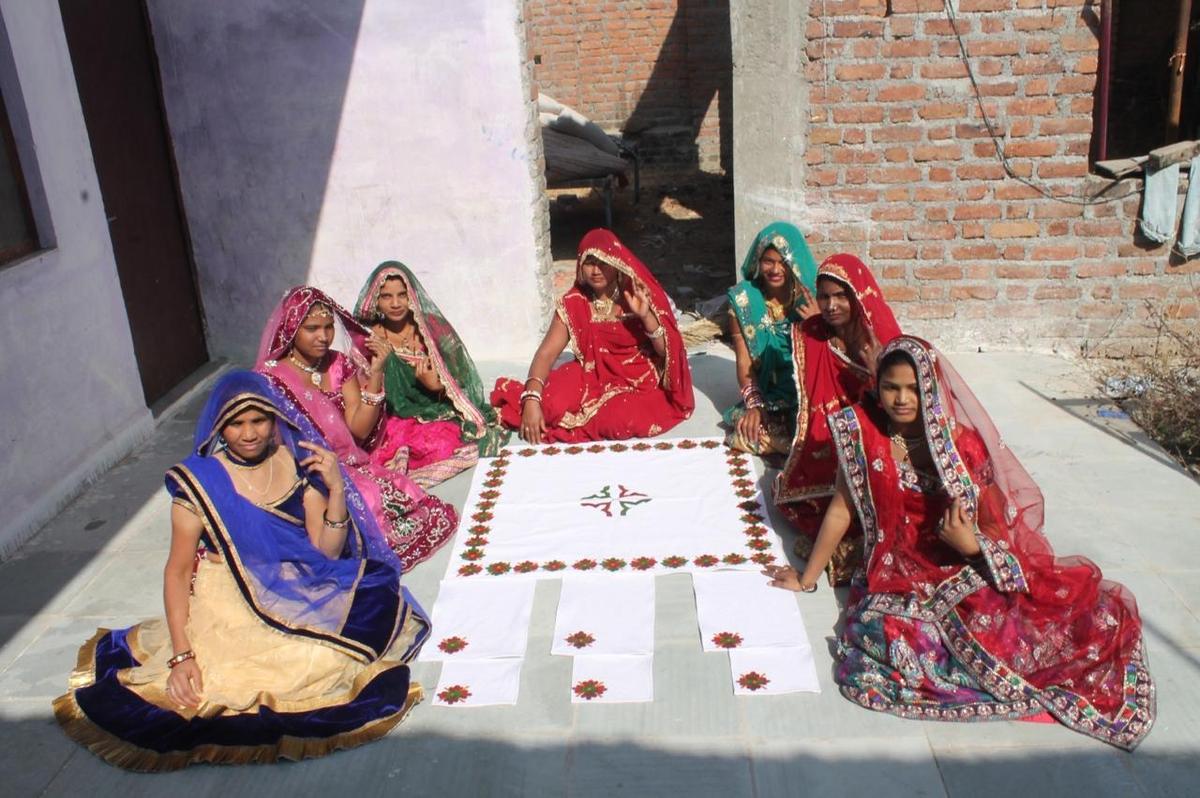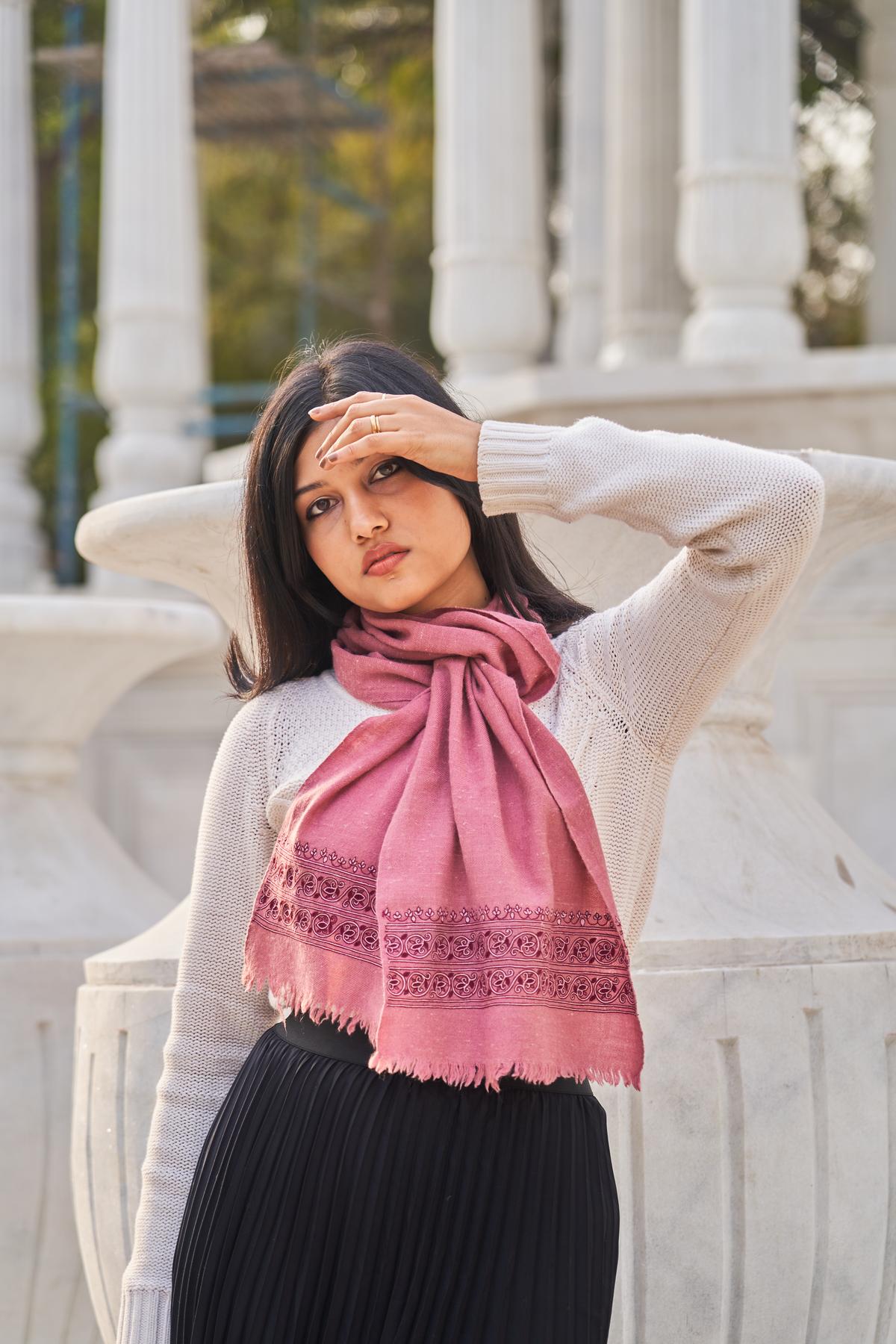Born and raised in Fatehpur in Uttar Pradesh, Radhesh Agrahari’s initiative, Golden Feathers, was born out of a classroom project. In 2011, while Radhesh was a student at the Indian Institute of Crafts and Design in Jaipur, he had to create something new out of waste for a project. “I was away for three days in Agra, and when I returned, my classmates had chosen items like plastic sanitary waste and thermocol, and so I had to look for a different material.”
Butchery waste, mainly feathers, is turned into fibre that can be made into stoles, shawls, mufflers and more
| Photo Credit:
Special Arrangement
And that is how he zeroed in on using food waste. “I had gone to a butchery to buy chicken, and I observed that when one orders 1.2 kilos of chicken, we get about 650 gms that can be used, and around 350 gms, that includes the feet, neck and feathers, go to waste,” says the36-year-old who is among India’s three finalists at R|Elan Circular Design Challenge (CDC).
Radhesh, along with his partners from IICD — Muskan Sainik and Abhishek Verma — spent the next eight years researching. By 2019, they were able to convert butchery waste, mainly feathers, into fibre that can be made into stoles, shawls, mufflers and more. The trio has also managed to make fish food, manure, and handmade paper from the waste.
Organised by Reliance Industries’ R|Elan (an initiative aimed at promoting sustainable and circular fashion practices), in partnership with the United Nations in India and Lakmē Fashion Week, CDC’s finals will be held at Lakmē Fashion Week x FDCI this October. Golden Feathers will compete with India finalists Crcle, Farak, and Maximilian Raynor (UK), Martina Boero (Cavia, EU), and Jesica Pullo (BIOTICO, Asia Pacific).

An embroidered stole
| Photo Credit:
Special Arrangement
Currently, the team at Golden Feathers crafts shawls, unisex stoles, handmade paper, quilts, among other products. For the CDC competition, the duo presented their Earth and Stitch collection comprising stoles and mufflers made from feather wool. “These pieces have been hand embroidered and handwoven by women belonging to the Bheel tribe in UP and Madhya Pradesh. The collection uses colours like off white, dull pink, and baby blue,” explains Radhesh, who will add crop tops, skirts, etc. to the collection for the finale.
“We started out with 10 workers in 2019, and now, we have 200. Some of them were artisans, the others learned the craft (weaving and creating thread) on the job,” Radhesh says. As for the process, Mayank explains how the butchery waste first gets sanitised using a 27-step process, and is thensegregated. Women artisans use this to create thread using wet spinning, and hand carting; which is then handwoven to create the fabric. The waste, Muskaan says, starts to decay after six hours, which is a small window in which one can work on it. “But, if we use chemicals to sanitise it, the quality of the feathers gets affected,” Radhesh adds.

Artisans with their creations
| Photo Credit:
Special Arrangement
This innovation is what led them to winning the prestigious German Design Award for Excellent Product Design — Lifestyle & Fashion, in 2021, making them the first Indian company to win Gold in the category. In December 2024, Golden Feathers was one of three winners for the Artha Impact Award and one of 18 winners of Kula Innovate 2024 innovation challenge.
“In New Delhi and the NCR region, on an average, close to 2.24 crore kilos of chicken are consumed in a day, which generates at least 74 lakh kilos of waste. This means that in a year close to 3 crore kilos of butchery waste from chicken is generated,” Radhesh says, “Butchery waste from other animals like buffaloes and goats usually gets used up: skin for leather, organs for speciality food and pet food, and the bones for broth, he adds, quoting data shared by Food Security and Sustainable Agriculture Foundation, a Delhi-based livestock research group.
.
A snapshot of the wet spinning process
| Photo Credit:
Special Arrangement
With Golden Feathers, Radhesh and his team have also managed to revive two weaving techniques: wet hand spinning and wet hand carding. The team has also empowered over 200 women belonging to the Bheel tribe, by employing them in their manufacturing units in Jaipur, Pune, and Jhalawar in Rajasthan.
The next step for Radhesh is to establish a village that makes wood-free paper aka handmade paper. The tradition of making handmade paper, he says, has been practised in India for centuries. “But it changed when the British started ruling us. A lot of our arts and crafts were lost,” he says, adding how several types of weaving and handicrafts have become extinct or obsolete in recent years like vark print, patua painting, and mirror work.

A unisex muffler at Golden Feathers
| Photo Credit:
Special Arrangement
Radhesh also hopes that the Government will support their work to establish a sustainable recycling model, which will help them divert the waste at a large scale. “Our vision is impact-driven,” he says, “We would like to fight pollution in all forms, be it land, air or water.”
Published – August 11, 2025 03:42 pm IST

